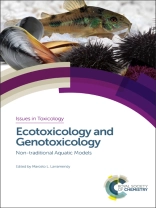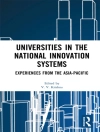The potential impact of anthropogenic pollutants such as agrochemicals on the environment is of global concern. Increasing use of certain compounds can result in contamination of food, water and atmospheric systems and in order to combat this pollution it is important to be able to accurately monitor the short and long term effects.
This book describes the latest aquatic species models used as indicators of the toxic effects of environmental pollutants, including models that have not routinely been used. The book enables understanding of the effects of pollutants in non-target species, and therefore enables analysis of the effects on ecosystems.
This book will be of interest to anyone interested in developing new biomarker species with high degrees of ecological relevance. It will serve as a useful resource for regulatory and research toxicologists, particularly those studying freshwater, marine water and sediment environments.
Tabela de Conteúdo
Rotifers as Models for Ecotoxicology and Genotoxicology; Prospects of Molluscan Immunomarkers in Monitoring Aquatic Toxicity – A Review; Freshwater crabs Potamonautes spp (Malacostraca, Potamonautidae) as model in nanotoxicity studies; Freshwater prawns Macrobrachium borellii and Palaemonetes argentines (Crustacea: Palaemonidae) as valid indicators of organophosphates pesticide exposure. A biochemical assessment; Application of the zebra mussel (Dreissena polymorpha) in the toxicity evaluation of emerging aquatic pollutants; The Comet assay in aquatic (eco)genotoxicology using non-conventional model organisms: relevance, constraints and prospects; The crab Ucides cordatus (Malacostraca, Decapoda, Brachyura), and other related taxa as environmental sentinels forassessments and monitoringof tropicalmangroves from South America; Adverse effects of pharmaceutical products in the marine environment: the use of non-target species to evaluate water and sediment matrices; The crayfish Cambarellus montezumae as a possible freshwater non-conventional biomonitor; Crayfish, an experimental model for examining exposure to environmental contamination; The Use of the Ten Spotted Live-Bearer Fish Cnesterodon decemmaculatus (Jenyns, 1842) (Pisces, Poeciliidae) in the Genotoxic Evaluation of Environmental Pollutants; Hypsiboas pulchellus (Anura, Hylidae) tadpoles, a novel amphibian experimental model in aquatic pollution research; Biomarkers of environmental contamination in reptile species: the effect of pesticide formulations on broad-snouted caiman Caiman latirostris (Crocodilia, Alligatoridae); Developmental stages of Rhinella arenarum (Anura, Bufonidae) in toxicity studies. AMPHITOX, a customized laboratory assay; Use of Melanin Pigmented Cells as a New Tool to Evaluate Effects of Agrochemicals and other Emerging Contaminants in Brazilian Anurans; Genotoxic and biochemical responses triggered by polycyclic aromatic hydrocarbons in freshwater and marine fish: tambaqui and seahorse as bioindicators; Blenniidae and Syngnathidae: partially unexplored reservoirs of sentinel species for environmental monitoring studies; Odontophrynus cordobae (Anura, Cycloramphidae), a suitable model for genotoxicity in environmental monitoring studies; The Use of Fish as Model Aquatic Organisms in Genotoxicity Studies; Genotoxicity in urodele amphibians Pleurodeles waltl and Ambystoma mexicanum (Lissamphibia, Caudata) exposed to freshwater pollutants: a historical view; Chemical threats to sea turtles; The use of aquatic life-stages of European amphibians in toxicological studies.












